.
.
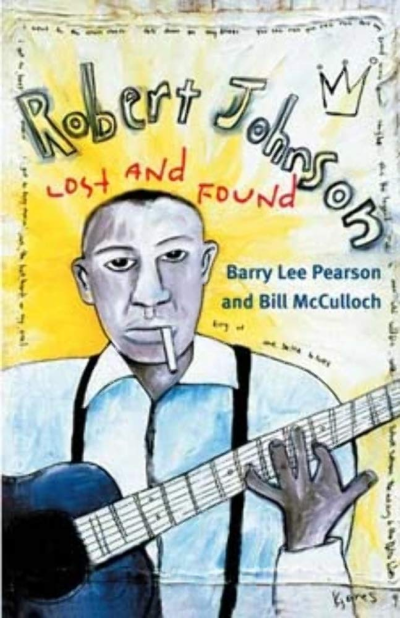
.
.
…..With just forty-one recordings to his credit, Robert Johnson (1911-38) is a giant in the history of blues music. Johnson’s vast influence on twentieth-century American music, combined with his mysterious death at the age of twenty-seven, has allowed speculation and myths to obscure the facts of his life. The most famous of these legends depicts a young Johnson meeting the Devil at a dusty Mississippi crossroads at midnight and selling his soul in exchange for prodigious guitar skills.
…..In Robert Johnson: Lost and Found, Barry Lee Pearson and Bill McCulloch examine the full range of writings about Johnson and sift fact from fiction. They compare conflicting accounts of Johnson’s life, weighing them against interviews with blues musicians and others who knew the man. Through their extensive research Pearson and McCulloch uncover a life every bit as compelling as the fabrications and exaggerations that have sprung up around it. In examining Johnson’s life and music, and the ways in which both have been reinvented and interpreted by other artists, critics, and fans, Robert Johnson: Lost and Found charts the broader cultural forces that have mediated the expression of African American artistic traditions.*
…..Pearson, a noted blues scholar and professor of English and American studies at the University of Maryland at College Park, discusses the myths surrounding the life and career of Robert Johnson in a November, 2003 interview hosted by Jerry Jazz Musician publisher Joe Maita.
.
.
___
.
.
“The point that must be made is this: Robert Johnson’s life was tragic, but only because it ended so early. There is no morality play here. Johnson lived the life he did — singing songs, drinking, and begging favors from every woman he met — not because he was haunted by apocalyptic or supernatural images but because it was the life he chose to live.”
– Barry Lee Pearson and Bill McCulloch
.
.
JJM Early jazz critics thought Robert Johnson’s music echoed the origins of jazz. Others characterize him as the King of the Delta Blues singers. How would you characterize his music?
BLP I characterize him being a traditional artist whose music was very imaginative. Some people think it is a dichotomy to mention traditional and innovation in the same sentence, but I am a folklorist, and I certainly don’t think that way. Robert Johnson took what was around him, and with great skill and facility, fashioned it into something that was tied to the past but felt brand new and contemporary. I believe jazz musicians tended to see him as part of a generation that was dying out, but I see him more as an innovator who helped the blues tradition move on to the next level. That is certain.
JJM What were his personal characteristics?
BLP Since I never knew him, it is hard for me to have a complete understanding about who Robert Johnson was. One thing that we can easily conclude, however, is that people who actually did know him painted a very different picture of him than those who understood him only through analyzing his songs. People who knew him, especially when he was younger, referred to him as a very nice, friendly guy, and as someone you could talk to. He was also very popular with the ladies, which may have contributed to his demise. He had a tendency to “come on” to whatever woman he was attracted to.
JJM What sort of a live performer was he?
BLP There is a really great film called Can’t You Hear the Wind Howl? by Peter Meyer that includes interviews with a number of Johnson’s childhood friends from the Robinsville, Mississippi area where he grew up. They describe him in much the same way that John Shines did later in life, as being a very dynamic live performer. He would dance and play at the same time, had a very keen voice, and possessed a full guitar style that people admired. It is a picture of an energetic man — quite the opposite of the demented, withdrawn character latter day critics have portrayed him to be.
JJM Other musicians of the era recall Johnson playing a wide repertoire of songs.
BLP Yes, he played whatever people wanted. He supposedly had a “phonographic” memory — whatever he heard he could recreate. And he did so to good effect, because as a walking musician he was dependent for much of his income on being able to play music that people wanted to hear. He could play ethnic music, hillbilly music, popular songs, and he probably played a number of songs that he wrote but did not record. People point out a song of his called “Mr. Downchild,” for example, and at least a half dozen other titles that he never recorded, and they remember him having ballads like “Casey Jones” in his repertoire. Fortunately, after he had a couple of hits, people wanted to hear those songs.
JJM Why is he regarded so differently from other blues artists of that era?
BLP That is a real mystery. We titled our book, Robert Johnson: Lost and Found, as a way to counteract the mystery surrounding him. For some reason, people were impressed by his music, but early on didn’t know much about him. He has been portrayed as a mystery in publications with titles like Searching for Robert Johnson. What people did discover about Johnson was essentially off-track and anecdotal. His recordings affected his non-traditional audience in an unusual way. I believe that if many of the earlier critics had listened to more blues songs, and if they heard similar artists, he might not have been portrayed as such a mysterious figure.
JJM Along those lines, you wrote, “We argue that the key to Johnson’s music, especially for anyone who plans to write authoritatively about it, is not just the feeling it evokes in the solitary listener. One also needs to know something about the time and place in which Johnson performed and the mainly rural, mainly African American people with whom he commiserated over the wayward nature of men and women, the hardships of day-to-day life, and the fragility of relationships.” It seems as though writers were reluctant to consider Johnson in such a context.
BLP That’s right. From the earliest description of his music — which would have been John Hammond’s in 1937 — he writes that Johnson is more authentic than anybody else. Why he had that effect on listeners at that time is a bit of a mystery, because I don’t believe his regular audience thought of him as being greater than any other musicians of that era.
People have argued this question forever; was Robert Johnson a great musician or was he just an average musician? I certainly think he was an excellent musician, but some argue that Lonnie Johnson was a better guitar player, or that someone else may have been a better singer. But he had some qualities in his music that continue to endure. It has worked for generation after generation, and probably would even without the benefit of all the hype that is associated with it. But I do think that the history of the hype and the legendary version of Johnson cause people to initially hear his music in a slanted way.
The reason I have never felt very comfortable with they hype is because, as a musician, I knew him by his songs like “Sweet Home Chicago,” “I Believe I’ll Dust My Broom,” “Ramblin’ On My Mind,” and “Kind Hearted Woman Blues.” These were songs that Chicago blues musicians played when I was growing up. There is nothing mysterious about these songs — they talk essentially about movement, travel, women, and having a good time. These songs are all quite danceable. I have always felt that songs like “Hellhound On My Trail” were the least characteristic of those Robert Johnson wrote.
JJM Yet that is the song that critics most often use to characterize Johnson.
BLP Exactly. If you go to the Rock and Roll Hall of Fame in Cleveland, their exhibit on Johnson is titled, “Robert Johnson, Hellhound On the Trail.” Almost every chapter within the exhibit is titled “Hellhound On His Trail,” “Robert Johnson and the Devil,” or something to that effect.
JJM So, “Hellhound On My Trail” was the song that was probably least in character, yet the critical establishment grabbed hold of it. Why? Was it about marketing?
BLP Initially, I think it had to do with Rudi Blesh, a jazz critic who in 1946 wrote a book called Shining Trumpets, which was a compilation of writings that discussed different types of music and gave examples of what he had in his record collection. He had “Hellhound On My Trail” in his collection and, for some reason, chose that song to represent Johnson. He wrote about it in language that was almost unbelievably florid, and speculated about what type of person Robert Johnson must have been to write a song like that.
JJM He described the song as being “…full of evil, surcharged with the terror of one alone among the moving, unseen shapes of the night.”
BLP Yes, and who knows where he got that? The whole story of how the mythology of Robert Johnson evolved is quite interesting because it is consistently wrong from the beginning, but it does change over time. Rudi Blesh deserves credit for being the person who initially links Robert Johnson to that one single song, “Hellhound On My Trail,” a song that was so unlike others that Johnson was doing — except for the songs written by others that Johnson covered. What I mean by that is that he could incorporate something into his own style, or he could pick up on other people’s style. In “Hellhound,” it seems clear there are a half dozen other songs — going all the way back to Skip James’ “I Would Rather be the Devil Than Be My Woman’s Man” — that Robert Johnson used in putting that song together.
I also suspect that there was some input from his producer Don Law, because J.T. Smith — who Law also produced — recorded a song, “Howling Wolf Blues No. 3,” that talked about hellhounds getting on his trail. This was a big hit for Don Law when he was still a jobber for the Brunswick label, so it was a chance for him to reprise one of his biggest successes. It is funny, hellhound comes in a little bit later, in a sort of comic prisoner’s song by Lightnin’ Hopkins called “Long Gone Like A Turkey Through Corn,” or “Long Gone, Lost John.” I had been playing this song for a long time and just recently noticed that he references the hellhound too. “What can I see? It is the hellhounds coming after me.” It was produced by Mack McCormick, the man who wrote the most about Robert Johnson and the aura of evil that surrounded him.
JJM During that era many performers sang songs referring to the devil. As an example, Bessie Smith sang a number of songs with the word “Devil” in them. Weren’t references to the devil within the blues genre common in Johnson’s day?
BLP Yes. Johnson mentioned the devil in two songs in his repertoire, “Me and the Devil” and “Hellhound On My Trail.” As you said, Bessie Smith sang about six songs, and another half dozen about hoodoo magic. If you look in the discography from the thirties era, there are a huge number of songs that had to do with the devil. That is somewhat mysterious to me. My assumption is that it had to do with revising the image of the devil, and making him into a more comic character. But, all of Johnson’s songs usually talk about the devil as something associated with a woman’s unwillingness to behave properly. For example, “It must have been the devil to cause my baby to do what she did.”
JJM Well, that one word, “devil,” communicates a lot.
BLP Indeed. I found a song by Bo Carter from 1938 called “Old Devil,” in which he sings, “Go back, old devil, look up on your shelf/Get some soap and water and bathe your dirty self.” He was telling the devil to wash! And then he goes into a verse depicting violence: “I am going to beat my baby with a rope and a line/I beat my baby until she went stone blind.” So, that reminds us a little bit about Johnson’s “Me and the Devil Blues.”
JJM How did the myth of his selling his soul to the devil begin?
BLP That is a very popular traditional legend, as it is in European folk tradition with the Faust motif. It is also found in African tradition, where a person becomes involved with a spirit helper, and makes a pact with it. In almost every version, the person gets scared and runs away. They are more cautionary tales than anything else, but Robert Johnson supposedly had it attached to him in a 1960 article by Pete Welding in which he quotes Son House suggesting that Johnson, in his months away from home, “Sold his soul to the devil in exchange for learning to play (the guitar) like that.” We found no one who could corroborate that — no one who worked with Son House ever heard him say anything similar to that. And we were also suspicious because the statement is not in quotation marks, nor is it quoted directly from any interview format. It really doesn’t sound like Son House’s language, although I suppose one could argue about that. So Welding’s article was the first time a person put that accusation into print, and it was based, essentially, on the idea that Robert Johnson learned to play the guitar in a hurry.
JJM Right, because the story is that he wasn’t a particularly good guitarist. But he went away for a few months and came back a virtual virtuoso.
BLP Yes, but in fact he was probably gone longer than a few months. We found out later that he had someone teach him play, and that he possessed a lot of great, unrefined ideas prior to taking lessons. People would say the same thing about Charlie Parker. He was just as bad as he could be until he went away and became great.
JJM Sure, but we don’t say Charlie Parker sold his soul to the devil.
BLP True, although one could probably do so and generate as much evidence or more for him as they do for Johnson. As I said, there are a lot of artists who sang about the devil, but for some reason during that time, it was an interesting kind of marketing hype.
JJM Twenty years after Johnson’s death, record producer and writer Samuel Charters wrote, “Johnson’s singing becomes so disturbed it is almost impossible to understand the words. The voice and the guitar rush in an incessant rhythm. As he sings he seems to cry out in a high falsetto voice. Johnson seems emotionally disturbed by the image of the devil. The figure seems to be his torment.” How did Charters come to the conclusion that Johnson was tormented by the devil?
BLP We have a lot of problems with that. Welding himself, when that was re-published, talked about that being vintage rococo Welding writing. That is another thing we noticed about the myth building of Robert Johnson — that one writer would try to outdo the previous one in terms of how wild their theories could get. My favorite Welding passage was in the liner notes to the second Johnson LP, which tried to present him as a rock and roll innovator, but he still used the same language and some of the same material, in fact, from that earlier “Hellhound On His Trail” essay. He refers to him as an Orpheus on his journey along the Labyrinthian path of the human psyche, and he says, “In his songs one hears the impassioned, unheeded cries of man, ruthless and purposeless, the acrid stench of evil turns ever in his mind.” I mean, really! What did Howlin’ Wolf say about him? He said Robert had a nice personality, and was a nice looking guy that women went for. Willie Mae Powell says he was the “cutest little brown thing you ever saw.”
JJM The musicians clearly heard his music differently than the literary critics did.
BLP Yes. Martin Scorsese says he was pure legend. While our book may not change people’s reaction to the legend or the mythology — because that is firmly in place — it is reasonable to think it will cause us to take another look at what Robert Johnson was like as a person, and what his initial audience thought of his music. It may also cause people to think about who benefited from the creation of these reconfigurations of Robert Johnson. How did things get so out of hand with Robert Johnson? Nobody knows.
JJM Isn’t it possible that the supernatural interested him?
BLP It is very possible that the supernatural interested him, just as it would anyone — myself included. I am a folklorist, so I am interested in the supernatural. People who I really admire — the Memphis-based scholar David Evans, for example — sees much more supernatural referencing in Robert Johnson’s work than either I or Bill McCulloch do. It is hard to say. When the supernatural is referred to in blues it is usually done so in terms of possessing some type of magical powers that have control over whoever you are in a relationship with. So it is pretty specific, unless you are getting into those songs in which somebody is threatening — for example, telling your woman you are going to kill her and she will then go down to hell, or something like that. In the blues tradition, that is done more or less tongue in cheek, where a man and woman carry out a threatening argument but kind of laugh at the same time.
JJM Did other blues musicians resent all the attention that Johnson got as a result of all the myths?
BLP Not during his lifetime, of course, because I don’t know think the myths were in place or well known while he was living. There are some references to Memphis Slim saying that Johnson would occasionally get drunk and curse God. Later on, people like Johnny Shines, in particular, resented the fact that people asked him more about Robert Johnson than about Johnny Shines. When I first interviewed Shines twenty-five years ago, he didn’t have a lot to say about Johnson, but later in his life he seemed to accept the role of being a historian or biographer, especially in regard to trying to set the record straight. He made efforts to dispel that deal with the devil myth, which he thought was baloney.
JJM One of the prominent characters in this whole story is record producer John Hammond. In an onstage elegy of Johnson to the Carnegie Hall audience attending the 1938 “Spirituals to Swing” concert, he said, “Johnson died last week at the precise moment when Vocalion Records scouts finally reached him and told him that he was booked to appear at Carnegie Hall on December 23.” How did Hammond get this erroneous information, and did he do any research before saying this?
BLP I imagine that he was doing the best he could with what he had. Much of what he knew of Johnson, especially the kinds of quips and anecdotes he was getting from Don Law and a couple of other people in the recording business, were rumors. And, as we noted in the book, a lot of these rumors were wrong. In fact, his reference to Johnson’s home town of Robinsonville as Robinsville was wrong early on and stayed wrong. I would say that Hammond had a flare for the dramatic, and as others who spoke of Johnson, instead of just saying something about him, what he said about him was done so as dramatically as possible.
JJM Yes, but Hammond may have had a tendency to add drama for his own purposes of selling more recorded music.
BLP Y es, well that is true too, although it took a long time for Columbia to put out the Robert Johnson album. They didn’t release a record until they were concerned that someone else would beat them to it. But, I have great respect for John Hammond as a producer, although you are right, he tended to be a bit romantic and idealistic.
JJM Hammond was involved in the rumors surrounding the mysterious circumstances of Bessie Smith’s death as well. According to her biographer Chris Albertson, he contributed to many of the myths, and willingly reported rumor and hearsay as fact. It is easy for one to conclude that he did this for the benefit of promoting his company and upcoming Bessie Smith recordings. While the exact circumstances are different concerning his involvement in announcing Johnson’s death, he clearly knew how to draw attention to himself through these events. I was sort of struck by how a man in Hammond’s capacity could not have known of Johnson’s death earlier than he claims to have.
BLP While that is interesting to think about, people like Robert Johnson were pretty hard to track down. They were constantly in motion. Honey Boy Edwards would characterize himself as being just like a dog — nobody ever really knew where he was. So, I can imagine that it would have been difficult to track such a person down. Even some of the musicians who knew Johnson didn’t know he had died. Then we started to get a lot of stories. Jim O’Neil of Living Blues magazine once told me that there were so many stories from people of Robert Johnson dying in their arms that there must have been a whole gang of folks holding him up. That is probably in reference to Sonny Boy Williamson #2 and Honey Boy Edwards saying they were at Johnson’s bedside at his death. But that is part of the legend process too — some people try to put themselves as close to it as they can. As for Hammond’s involvement in the Bessie Smith legend, I think he was passing on stories that he heard from a number of musicians.
JJM You are referring to the story of her being turned down at the white hospital?
BLP Yes, and if this didn’t happen to Bessie Smith it doesn’t mean that nobody ever was turned down at a white hospital in the South — segregation was the law of the land — but it probably wasn’t true in Bessie Smith’s case from what I have heard. I have also talked to musicians who claimed they were with Bessie Smith in the car, even though it is quite clear that they weren’t. So, what Hammond reported to the audience at the “Spirituals to Swing” concert regarding Johnson was obviously hyped and became part of this legend formation. He could have easily said that he was searching for him to make another record when they we found out that he had died. But it is flashier to put it in his words, just as it is flashier to claim that Johnson died barking like a dog rather than admit he was on his hands and knees, puking his guts out.
JJM Are the circumstances of his death pretty well sorted out by now?
BLP No, not exactly. I am content that he was poisoned by a jealous man, but we don’t know that for certain. It is possible he beat the effects of the poison and then died by other means such as a heart attack, pneumonia, or from some preexisting condition like syphilis. Obviously the poison didn’t do him any good, and he died either as a result of it, or after the fact.
JJM Was his mother present?
BLP My sense is that no family members were with him when he died, but again, there are multiple story lines going on about this, including about where he died. For many years they couldn’t locate the death certificate, and when they did find it, they discovered something on the other side of it that added to the mystery. It has been a strange case, that is for certain, but people are now getting things a little bit tighter. Most recently they discovered a house in Hazelhurst where it is believed he was born, and they are pretty certain that they know where he is buried now.
JJM Yes, there has been uncertainty about the location of his gravesite.
BLP That’s right. There are at least three different possible gravesites that I know of, and that is fine. I don’t know if he will ever be disinterred or DNA tested, and I don’t think there is reason for that, but it means that the tourists who are going to two sites now can go to three sites if they want to.en those familiar with the facts — indeed, some of the researchers who helped dig out the facts — have too often misrepresented Johnson as a mythic figure, an enigma.” Why did writers continue to present views of Johnson as being taken by the devil, even in the face of reliable information to the contrary?
BLP Well, people just like that story line. It is a good hook, especially when the LP box set came out and there was so much hype surrounding its release. Everyone involved with its release was quite surprised by the media’s attention and subsequent sales figures. At the time, I co-produced a record from a Smithsonian Folk Life Festival called The Roots of Rhythm and Blues: A Tribute to the Robert Johnson Era, in order to take advantage of the notoriety surrounding the box set. We attempted to talk about the traditional communities and set him back into the context in which he created his art, but instead quite the opposite occurred. His story line was just too attractive, and he became the guy who made a deal with the devil and subsequently invented rock and roll. There was something in it for everybody. Even publications like People magazine — who knew very little about Robert Johnson’s cultural context and his music — were writing about him. He was a new commodity to them, and what they reported were these few easy-to-remember motifs.
JJM It is interesting that some pretty serious journalists seemed to overlook the obvious and kept reporting these myths.
BLP I think it tells us more about those times than it does about Robert Johnson, certainly. I suspect that all of these writers were well meaning, but when it came to Robert Johnson their imagination ran away from them.
JJM You wrote of them, “The only way to freshen the same old stories about Johnson (and avoid obvious plagiarism) was to resort to escalating levels of excited prose.”
BLP Yes, it seemed as if there was a competition of sorts to see who could outdo the other. While one could say that this is a tribute to Johnson, at the time people knew very little about Johnson other than what was written of him. It is important to remember that many people of that time were distanced from Robert Johnson and his culture, and were introduced to his music while listening to him at home, maybe even while smoking a joint with the headphones on at midnight. It is possible they were thinking they were going to hear something scary, and many of them may have. I have no doubt that Greil Marcus was frightened by it. In a Village Voice article called “Walking into a Room,” he wrote, “I turned the record over and stopped dead with stones in my passway. My nice living room was suddenly invaded by absolute terror.” Obviously, he is not making these feelings up, and the question is, what could have caused people to hear Johnson’s music in this way other than their being influenced by what was written of him?
Because he had a lot of feeling in his voice and sounded very convincing, people thought Johnson always sang about himself and that everything he sang was true. And, I believe that generation of listener thought whatever Johnson sang about actually happened to him – that he went to the crossroads and made a deal with the devil, for example. I don’t think he had anything like that in mind when he sang that song.
JJM One of the more controversial lyrics of Johnson’s writing came in the song, “Me and the Devil Blues,” where he sings, “Me and the Devil was walkin’ side by side/Me and the Devil, ooh was walkin’ side by side/And I’m goin’ to beat my woman/until I get satisfied.” That tended to portray him as being as misogynistic and abuser of women.
BLP Yes, there is a lot of writing that suggest he was a country bumpkin — a demented street person who hates women, and consequently they look for evidence to support this in his song lyrics. There is a rumor that he had a defective eye, and some people say that he hated women because they rejected him due to it. He was psychoanalyzed so much from his song lyrics. If you look at contemporary gangsta-rap or at a variety of country music lyrics, you will find similar themes, but they seem especially prevalent in blues. However, I would like to make the point that when violence is sung about in the blues, it is almost never enacted. It is just threatened. In his songs, Johnson tends to converse with his woman: “You know what I mean, babe.” “I don’t care where they bury my body, babe.” There is no violence but there is a lot of threatened violence.
JJM In 1990, Living Blues editor Peter Lee wrote, “What would Johnson’s blues be without the myth? Would we still be as mesmerized by his music — and the power and poetry of his blues — if there were no mystery surrounding his life?” How would you answer that question?
BLP The people selling his records, obviously, would say that there wouldn’t be as much interest, so they perpetuate the myth, because as long as it is there, they can continue to sell his material at a crisp rate. But Johnson was a heroic figure in his own right, even without having this mythology attached to him. Imagine him walking the back roads of the South with a guitar on his back — the threat of racist attacks always looming — making a living by entertaining people in very tough juke joints. It isn’t as if Johnson or others who led similar lives needed more adventure in their lives. They already had too much adventure. So, my hope is that people listen to Johnson’s music within the context of the blues, and within the context of American music in general. Appreciate his songs as being almost perfectly articulated blues music that work today just as they did for his initial audience. Clearly, Robert Johnson is not in need of mythology to make him into somebody that was a great artist. He was a great artist to whom mythology was later attached.
.
_____
.
“As a participant in a remarkable chapter of American history, and as an inhabitant of a sometimes savage underworld of jooks, jails, and Jim Crow, Robert Johnson endured hardships and took chances — perhaps even foolish chances — so that he could exercise agency over his own life. He also found the time to leave a recorded musical legacy, once that continues to enrich our lives. And just as Johnson’s music stands on its own, with no need of embellishment, so does his life. He more than earned the right to have his likeness on a postage stamp and to be venerated as one of the twentieth century’s most potent voices.”
– Barry Lee Pearson and Bill McCulloch
.
.
About Barry Lee Pearson
JJM Who was your childhood hero?
BLP That is easy to answer — Elmore James. I thought he was a really great musician. When I was a child, I never really wanted to be an athlete or a fireman, because it was music that interested me, and Elmore James was the musician I most admired.
JJM Are you a musician?
BLP Yes, I have been a musician. I was in a group in Ann Arbor, Michigan during the sixties called “The Fabulous Driving Wheel Blues and Soul Show Revue.” I recently toured with John Cephas and Phil Wiggins, a Piedmont blues duet, playing as the Bowling Green Blues Trio — essentially working for the State Department. So, I play the blues, which is one of the reasons why I got into this project. My experiences with it shaped the way I look at things.
.
.
Barry Lee Pearson is a professor of English and American studies at the University of Maryland at College Park, a noted blues scholar, and the author of Sounds So Good to Me: The Bluesman’s Story and Virginia Piedmont Blues: The Lives and Art of Two Virginia Bluesmen. In the 1980s he toured Africa and South America for the U.S. Department of State with Piedmont artists John Cephas and Phil Wiggins as the Bowling Green Blues Trio.
.
.
Interview took place on November 24, 2003, and was hosted and produced by Jerry Jazz Musician editor/publisher Joe Maita
.
.
If you enjoyed this interview, you may want to read our interview with Bessie Smith biographer Chris Albertson.
.
.
* Text from the publisher
.
.
.
___
.
.
.
Click here to read other interviews published on Jerry Jazz Musician
Click here to subscribe to the (free) Jerry Jazz Musician quarterly newsletter
Click here to help support the ongoing publication of Jerry Jazz Musician, and to keep it commercial-free (thank you!)
.
___
.
.
Jerry Jazz Musician…human produced (and AI-free) since 1999
.
.
.







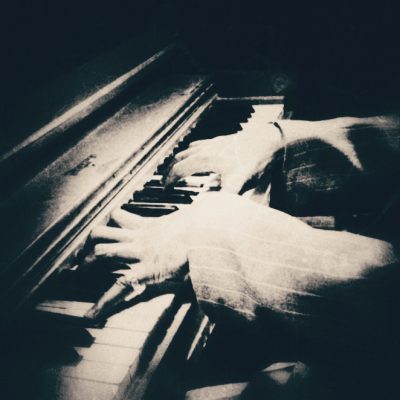













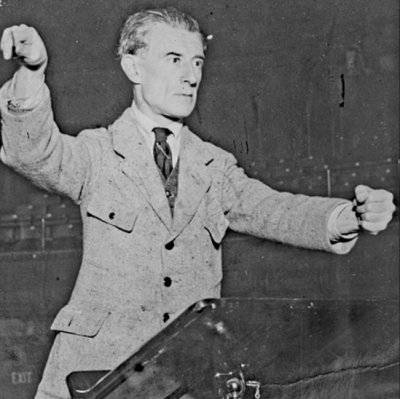

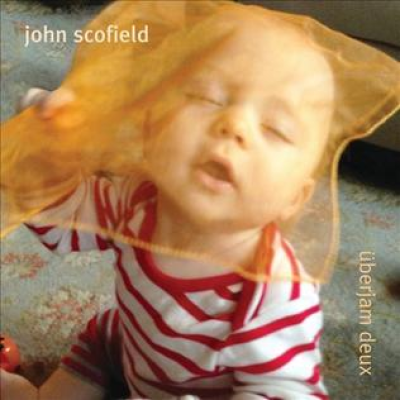
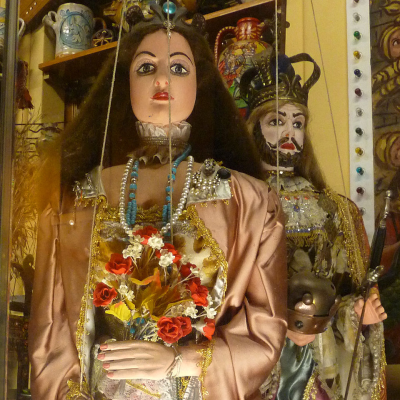





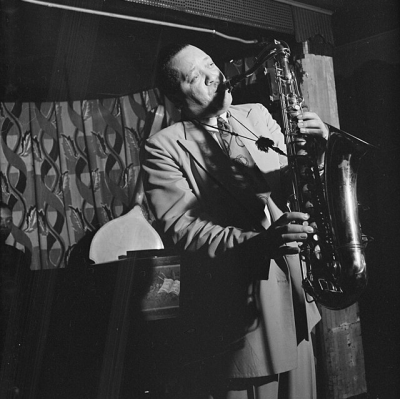













In the context of other performers of the 1930s such as Skip James, Willie McTell, Blind Blake, Kokomo Arnold, Booker White, and Scrapper Blackwell, Robert Johnson’s music isn’t special. He, like most acoustic guitarists (including those who sold WAY more 78s than he did), wasn’t at all well-known later to the jump blues musicians who invented rock and roll (such as Roy Brown of the 1949 hit rocker “Boogie At Midnight,” who listened to music like Louis Jordan’s and recalled that he didn’t listen to acoustic blues). Robert Johnson’s name has been increasingly famous since about the 1970s (largely to people who haven’t actually compared him to James, McTell, Blake, Arnold, White, or Blackwell) because he died young (compare the overrating of James Dean, Kurt Cobain, etc. relative to peers), because rock writers who were incompetent at blues history sloppily popularized the idea that he sold his soul to the Devil, because Sony and related companies have been excellent at promotion relative to their competitors whether it’s Miles Davis, Johnny Cash, or whoever, and because many high school and college kids have needed about one blues CD in their CD collection, not dozens. None of that is a mystery.
Hello Barry, Kent DuChaine here. I hope you and your loved ones are doing well. Thanks for keeping the Memory of Robert Johnson alive and Well. I have posted some video from our time at the Smithsonian Folklife Festival back in 1991. I thought you might be interested. Facebook Kent duchaine.
BluesForever
Kent